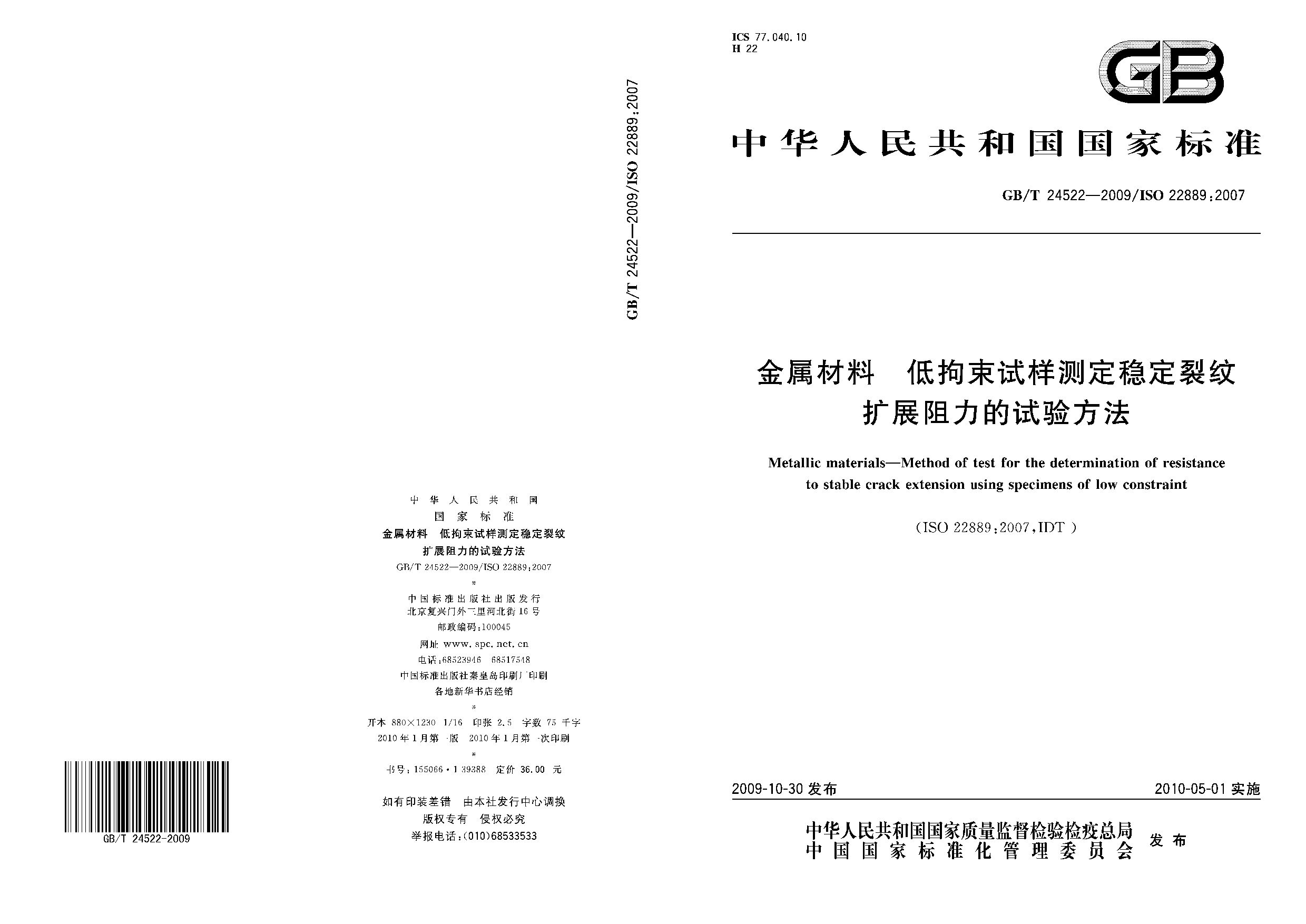GB/T 24522-2009
Metallic materials-Method of test for the determination of resistance to stable crack extension using specimens of low constraint (English Version)

- Standard No.
- GB/T 24522-2009
- Language
- Chinese, Available in English version
- Release Date
- 2009
- Published By
- General Administration of Quality Supervision, Inspection and Quarantine of the People‘s Republic of China
- Status
- 2021-01
- Replace By
- GB/T 24522-2020
- Latest
- GB/T 24522-2020
- Scope
- This standard specifies the method for the determination of the resistance to stable crack propagation when the plastic deformation of a low-constraint cracked body specimen of a homogeneous metallic material is subjected to quasi-static loading. The compact support specimen and the center crack tensile specimen have notches, and the fatigue method is used to prefabricate the crack, and the test is carried out under the condition of slowly increasing the displacement. The test methods described in this standard cover those size-insensitive specimens that do not meet the fracture properties, such as compact tensile specimens and central crack support specimens with relatively thin dimensions. This standard gives the method for determining the crack growth resistance curve (R-curve). According to GB/T 21143, determine the characteristic value of the fracture toughness of the compact tensile specimen, and the method for measuring the characteristic value of the fracture toughness of the central crack tensile specimen is given in Appendix D. Crack growth resistance can be measured using a multi-sample method or a single-sample method. The multiple-specimen method requires that each nominally identical specimen be loaded with some degree of displacement. The amount of ductile crack growth is marked, and the specimen is subsequently opened to measure crack growth. The single-specimen method based on the unloaded compliance method and the potentiometric method can also measure crack growth as long as the accuracy requirements can be met. The recommended single-sample method is described in GB/T 21143. Either way, the goal is to obtain enough data points to adequately describe the crack growth resistance behavior of the material. The determination of δ5 is relatively simple and easy. The results for δ5 are represented by resistance curves, showing the uniqueness of the crack growth for a certain limit range. Far from this limit range, the δ5 resistance curve of the compact tensile specimen shows a strong dependence on the specimen width, while the δ5 resistance curve of the central crack tensile specimen shows a strong dependence on the specimen width. Weak dependence on sample width. The experimental determination of CTOA is difficult. The critical CTOA is represented by the stable value reached after a certain degree of crack propagation. The concept of CTOA can be applied to a large amount of crack growth, and its applicability exceeds the application range of the existing δ5. Both measurements of resistance to crack growth are suitable for structural evaluation. The concept of δ5 is complete and can be applied to structural integrity problems through existing evaluation procedures based on simple crack driving force formulations. The concept of CTOA is generally more accurate. Numerical methods, such as finite element analysis, are required for structural applications. The study showed that when the two specimens were loaded to the maximum load, the CTOA and the unique R-curve maintained a close relationship. The analytic or numerical relationship between the δ5-R curve and the critical CTOA remains to be further studied.
GB/T 24522-2009 Referenced Document
- GB/T 12160 Metallic materials-Calibration of extensometers systems used in uniaxial testing*, 2019-10-18 Update
- GB/T 16825.1 Metallic materials—Calibration and verification of static uniaxial testing machines—Part1:Tension/compression testing machines—Calibration and verification of the force-measuring system*, 2022-10-14 Update
- GB/T 20832 Metallic materials Designation of test specimen axes in relation to product texture
- GB/T 21143 Metallic materials.Unified method of test for determination of quasistatic fracture toughness*, 2014-12-05 Update
GB/T 24522-2009 history
- 2020 GB/T 24522-2020 Metallic materials—Method of test for the determination of resistance to stable crack extension using specimens of low constraint
- 2009 GB/T 24522-2009 Metallic materials-Method of test for the determination of resistance to stable crack extension using specimens of low constraint